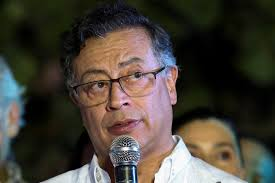Colombian President: Role, Responsibilities, and Leadership in Colombia
The President of Colombia holds one of the most powerful political positions in the country, serving as both the head of state and head of government. As the central figure in Colombia’s executive branch, the president plays a crucial role in shaping national policies, international relations, and addressing pressing issues like security, economic development, and social welfare. In this article, we will explore the responsibilities, powers, and significance of the Colombian president, along with a closer look at the current political landscape.
The Role of the Colombian President
In Colombia, the president serves a four-year term and is responsible for overseeing the country’s administration and enforcing laws. The president is not only the leader of the executive branch of government but also the commander-in-chief of the Colombian Armed Forces. This dual role gives the president significant influence over both domestic and foreign affairs.
The president’s responsibilities include:
Executing Laws: The Colombian president ensures that the laws passed by the legislature are implemented effectively. This responsibility extends to managing the country’s public administration and various government agencies.
Foreign Policy: The president represents Colombia in international diplomacy, engaging with foreign governments, leading trade negotiations, and fostering relations with international organizations such as the United Nations and the Organization of American States.
National Security: As the commander-in-chief of the military and the police, the president plays an integral role in national security, including combating internal conflicts, such as those with insurgent groups like the Revolutionary Armed Forces of Colombia (FARC), and addressing drug trafficking.
Appointing Key Officials: The president has the power to appoint key figures within the executive branch, including ministers, the Attorney General, and the head of the Central Bank. These appointments can have a significant impact on the country’s governance.
Economic Oversight: The president is instrumental in shaping fiscal policies, managing public spending, and overseeing the economic stability of the nation. Decisions about taxation, public welfare, and infrastructure development fall within the scope of the president’s powers.
The Electoral Process: How the Colombian President is Elected
The Colombian president is elected through a direct popular vote for a four-year term. To win the presidency in the first round, a candidate must secure an absolute majority of the votes. If no candidate achieves this, a runoff election is held between the two candidates with the highest number of votes in the first round.
This system ensures that the elected president has broad support, as they need to appeal to a wide range of voters across the country. Presidential elections in Colombia typically take place every four years, with the next scheduled election in 2026.
Current Colombian President: Gustavo Petro
As of 2022, Gustavo Petro serves as the President of Colombia. Petro, a former mayor of Bogotá and a former member of the M-19 guerrilla group, won the 2022 presidential election as the candidate for the left-wing political party Pacto Histórico. His election marked a significant shift in Colombian politics, as Petro became the first left-wing president in the country’s history.
Petro’s victory was seen as a response to the growing discontent among many Colombians with the traditional political elite. His platform focused on social justice, environmental protection, and reforms to address inequality, which resonated with large segments of the population, particularly younger voters and those in marginalized communities.
Petro’s Key Initiatives and Challenges
Since taking office, President Gustavo Petro has faced numerous challenges. His administration has been committed to implementing ambitious social reforms, but he has also encountered resistance from various sectors, including those who oppose his left-wing policies. Some of the key initiatives of his presidency include:
Economic Reform: Petro has emphasized the need for more equitable economic policies, including tax reforms aimed at reducing inequality. His administration has proposed increasing taxes on the wealthiest individuals and corporations to fund social programs.
Environmental Agenda: Given the global focus on climate change, Petro has placed a strong emphasis on environmental protection. He has outlined plans to reduce Colombia’s reliance on fossil fuels and transition toward more sustainable energy sources.
Peace and Security: Petro has prioritized peace efforts and negotiations with armed groups, aiming to further the peace process initiated by previous administrations. However, tackling the violence and security issues linked to drug trafficking remains an ongoing challenge.
Social Welfare: Petro has introduced measures to address poverty, healthcare access, and education in an effort to improve living conditions for Colombia’s most vulnerable citizens.
While Petro has received significant support for these reforms, his presidency has not been without controversy. Some critics argue that his leftist policies may hinder Colombia’s economic growth, particularly in sectors like oil and mining. Balancing the demands of his progressive agenda with the need for economic stability will be one of his key challenges in the coming years.
The Power and Limitations of the Colombian President
While the president of Colombia holds significant power, their authority is not absolute. Colombia operates under a system of checks and balances, where the executive, legislative, and judicial branches of government share power. The Colombian Congress, made up of the Senate and the House of Representatives, holds significant legislative power and can influence the president’s policies. Additionally, the country’s judicial system plays a key role in ensuring that presidential actions remain within the bounds of the Constitution.
The Colombian president’s term is limited to one re-election, meaning no president can serve more than two consecutive terms. This limitation is in place to prevent the concentration of power in the hands of a single individual.
FAQs
How is the Colombian president elected?
The president of Colombia is elected for a four-year term through a direct popular vote. To win in the first round, a candidate must secure an absolute majority. If no candidate achieves a majority, a runoff election between the two candidates with the highest votes is held. The election process is designed to ensure that the elected president has significant public support.
Who is the current president of Colombia?
As of 2022, Gustavo Petro is the president of Colombia. Elected as the country’s first left-wing president, Petro’s victory marked a shift in Colombian politics. Before becoming president, Petro served as the mayor of Bogotá and was a former member of the M-19 guerrilla group. His platform centers on social reform, environmental protection, and addressing inequality.
What are the key responsibilities of the Colombian president?
The president is tasked with overseeing the government’s daily operations, managing public policy, and handling the nation’s security issues. Additionally, the president plays a crucial role in formulating economic policies, managing Colombia’s international relations, and promoting social welfare.
What challenges does the Colombian president face?
The Colombian president faces several challenges, including addressing issues like security, poverty, economic inequality, and environmental degradation. Balancing progressive policies with the need for economic stability is often a delicate act, especially in a country with a complex history of violence and inequality.
To Conclude
The Colombian president plays a vital role in shaping the country’s political landscape. From managing national security to formulating economic policies, the president’s leadership is critical in navigating Colombia’s ongoing challenges. As the country’s first left-wing president, Gustavo Petro’s tenure promises to be a pivotal chapter in Colombia’s political history.
To read more, click here


